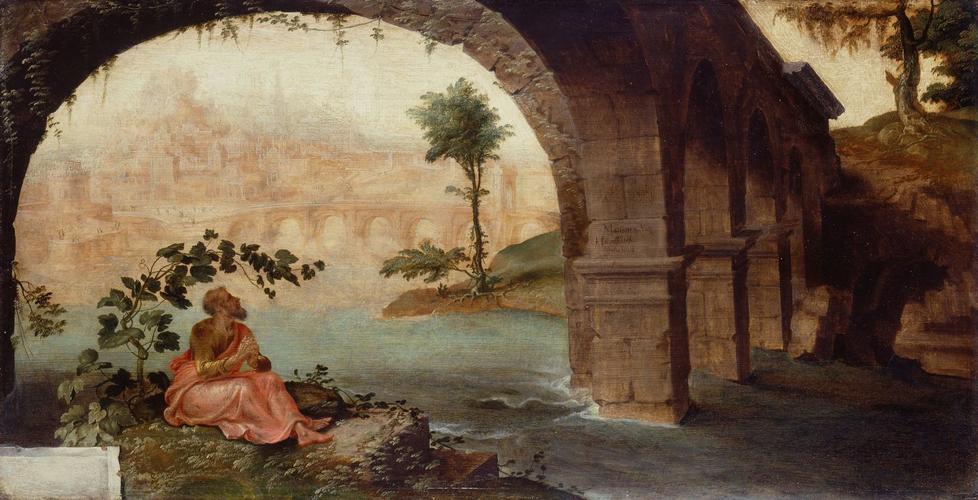-
1 of 253523 objects
Jonah Under His Gourd Signed and dated 1561
Oil on panel | 40.7 x 79.2 cm (support, canvas/panel/stretcher external) | RCIN 405465
-
Jonah was sent by God to tell the sinful citizens of Nineveh that their city was to be destroyed utterly. The citizens repented and began to mend their ways, so God relented. This happy outcome unfortunately compromised Jonah's credibility as a prophet. Furious, he took up a position outside the city waiting for the cataclysm that never came. 'And the Lord God prepared a gourd,' the story continues, 'and made it to come up over Jonah, that it might be a shadow over his head, to deliver him from his grief...But God prepared a worm when the morning rose the next day and it smote the gourd that it withered. And it came to pass, when the sun did arise, that God prepared a vehement east wind; and the sun beat upon the head of Jonah, that he fainted, and wished in himself to die'. (Jonah 4: 6-8) The point of the giving and taking away of the gourd tree was that Jonah had learned to value it; should not God then value a city with 70,000 inhabitants?
Heemskerck paints the moment 'when the morning rose the next day': the entire scene is shrouded in an early morning mist that will clear to a day of intense heat. This veils the city so that its size and design can be only partially apprehended. This imprecision leaves the imagination to conceive a metropolis, described in the Bible as three days' walk in diameter. The whole scene is in fact set in sixteenth-century Rome: the structure in the foreground is a Roman aqueduct of a type that could be seen surrounding the city on all sides (sections are visible to this day). The apparent oddity of the perspective is caused by the fact that the aqueduct divides into two above where Jonah sits, one branch heading off towards the city. The background loosely resembles the view down the Tiber near the Vatican, with the addition of a structure much like the Milvian bridge (from the outskirts of Rome) and a suggestion of the Castel S. Angelo on the left. A group of pen and ink drawings by Heemskerck survives, recording the monuments of ancient Rome; these were evidently executed on the spot in circumstances recorded in the background of his Self Portrait (Fitzwilliam Museum, Cambridge). Much of the architecture in the distance of this painting is fanciful and extravagant in order to evoke Nineveh, an ancient city more remote than Rome in time and location. However, using Rome as a starting point is an effective device: Heemskerck's viewers will have known about (and perhaps experienced) sight-seers' heat-stroke; it must have been easy for them to conceive of the catastrophe threatening Nineveh against the background of a city which, in the sixteenth century, was mostly rubble. Montaigne described Rome in 1581 as 'no more than a sepulchre...dead, overthrown and mutilated' and that sepulchre itself 'for the most part buried'. Even the Roman aqueduct - dry, hot stone where once water flowed - is a powerful image of thirst and ruin.
This is a striking and somewhat eccentric image, where architecture, atmosphere and figure all contribute towards telling the story. An illusionistic cartolino appears to be stuck onto the surface of the painting with three spots of sealing wax, like the one in the Self Portrait. It must have been planned to contain a verse from the Bible - rather than the artist's signature, which occurs elsewhere as if carved into the stone of the aqueduct.
Inscribed in bridge: 'Ao 1561 / Martynus Van Heemskerck / Inventor.'Provenance
Acquired by Charles II in 1660 for £25 from William Frizell at Breda (List II no 19); recorded in the King's Privy Gallery at Whitehall in 1666 (no 136)
-
Creator(s)
(nationality)Acquirer(s)
-
Medium and techniques
Oil on panel
Measurements
40.7 x 79.2 cm (support, canvas/panel/stretcher external)
54.3 x 92.6 x 4.3 cm (frame, external)
